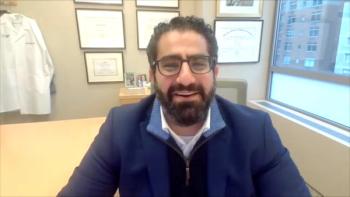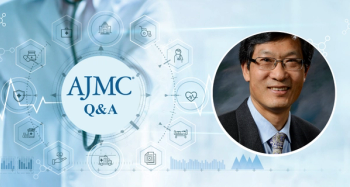
Dr Sean Khozin on FDA Initiative to Analyze Data From Real-World Pipelines
The Information Exchange and Data Transformation initiative at the FDA uses oncology data from not only clinical trials but also electronic health records and biosensors. This patient-centered approach brings research to the real world, as many oncology patients are excluded from clinical trials, said Sean Khozin, MD, MPH, senior medical officer at the FDA.
The Information Exchange and Data Transformation initiative at the FDA uses oncology data from not only clinical trials but also electronic health records and biosensors. This patient-centered approach brings research to the real world, as many oncology patients are excluded from clinical trials, said Sean Khozin, MD, MPH, senior medical officer at the FDA.
Transcript (slightly modified)
How does your work with the FDA’s Information Exchange and Data Transformation initiative use data to support scientific research?
So about a year ago we launched Information Exchange and Data Transformation at the FDA. It’s an oncology data science initiative, and it has 2 primary components. The first component is that we have a lot of clinical trial data at the FDA. Over the years we have accumulated a large repository of clinical trial data as part of regulatory submissions, and the first component of our program is aggregating and standardizing the clinical trial data into a common standard, and doing meta-analyses and predictive analytics. We have published on this work and a lot of work is generating a lot of new insights that we’re using in the regulatory decision-making process and to be able to provide input to the community in the design of clinical trials and identifying patient populations that may benefit from certain drug targets.
The second component of the program is to start leveraging new pipelines of data outside of clinical trials, and there are several new pipelines of data that we’re looking at. One of the main ones is data from electronic health records, real-world evidence, if you will. We’ve been exploring through research collaborations, and other means, the utility of real-world data in informing regulatory decisions, and there’s a lot of value in that.
In fact, that’s a very patient-centric approach, because we all know that in some cases clinical trials can be rather artificial. We exclude a lot of patients from clinical trials in oncology, patients with poor performance status are excluded, patients with brain metastases, prior malignancies for example, are excluded from clinical trials. So in some cases the data that we have from clinical trials do not actually reflect the patients that are being treated in the real world.
So by looking at electronic health record data, we can in fact understand not only how these drugs are being used in the community but also how the patients are responding to these therapies in the real world. And an extension of that would be to really start running pragmatic electronic health record-based clinical drug trials in the real world, essentially taking clinical research to the patient.
The current paradigm is really based on taking patients out of the community to clinical research centers, and that’s one of the reasons that in fact clinical trial participation for oncology patients is very low. A lot of statistics on that, less than 4% of oncology patients have an opportunity to participate in clinical trials. But now with real-world evidence and pragmatic clinical research, we have an opportunity to take clinical research to the patient, to the point of care.
We’re also looking at other pipelines of data, we are looking at the utility of biosensors and mobile sensor technologies to be able to better capture the patient’s experience. A simple example of that would be activity tracking as a measure of the patient’s performance status. But there are multiple other opportunities to use sensors to have a much deeper understanding of how the patient is doing. So there are a lot of opportunities in developing new algorithms, developing new methods to incorporate these biosensors into clinical trials and clinical research, and we’re working on pilot programs to create the early use cases that others can build on.
And other new pipelines of data include raw genomic data, and that’s where you really start to go into big data analytics and data science. So through this program we are essentially creating a new culture and new technical and organizational infrastructure for data science and big data analytics.
Newsletter
Stay ahead of policy, cost, and value—subscribe to AJMC for expert insights at the intersection of clinical care and health economics.















































